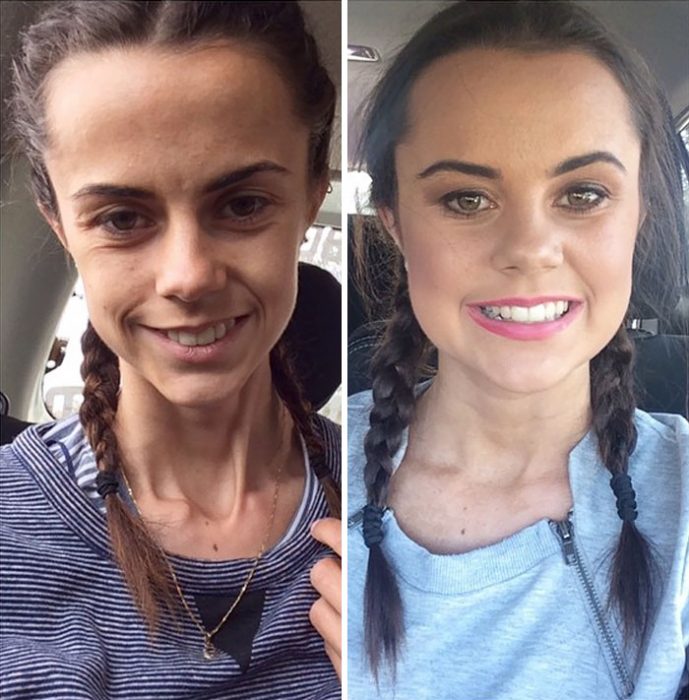Table Of Content

The idea that a discrete body area such as “cold hands” could determine the overall perception of temperature is supported in part by Mundel et al. (2016). They reported that when HCs (males) exercised in the cold, head-surface-temperature modulated thermal behavior/exercise intensity. Subjects subconsciously “monitored” head surface temperature and adjusted their exercise intensity based on this perception.
Malnutrition including anorexia nervosa
Lanugo fulfills its role via serving as a physical anchor between the skin and vernix. Lanugo imparts an increased surface area to the fetus, allowing more interactions between itself and the vernix (and thus a stronger anchor). Without lanugo, the vernix would not stay affixed to the skin and therefore would not be able to protect the fetus from harmful substances in the environment. Lanugo is ultimately replaced by villus (fine, thin hair) and terminal hair (thicker hairs found on the scalp, axilla, and genitalia). Often, lanugo is still present on the neonate (found in up to 30% of newborns).
What is vellus hair?
Former Marc Jacobs Employee Shares Disturbing Recollections - Racked
Former Marc Jacobs Employee Shares Disturbing Recollections.
Posted: Tue, 09 Sep 2014 07:00:00 GMT [source]
A reduced BMR is expected due to the weight reduction since less energy is needed to sustain a smaller body. However, this lowering of BMR is beyond the reductions one would anticipate with weight loss (Casper et al., 1991). Subcutaneous adipose tissue is an effective insulator, which generally impedes heat loss (Katic et al., 2017). ANs lose vast amounts of body fat (~71.3% compared to HC) in the process of their weight loss (Onur et al., 2005). This reduction in insulating fat (Mecklenburg et al., 1974; Davies et al., 1979; Chudecka and Lubkowska, 2016) contributes to higher skin temperatures and increased heat loss, reported in ANs (Chudecka and Lubkowska, 2016). You might know it as “peach fuzz.” It’s different from the thicker, longer hair you have on your scalp, which healthcare providers call terminal hair.
Help for Mental Illnesses
Identifying eating disorders as early as possible is critical, because it raises the chance of a successful recovery. Although young women account for many cases of anorexia, the disorder can strike anyone, of any gender, race, or age. Symptoms encompass an altered relationship to food, weight, and exercise, whether that be severe weight loss, seemingly peculiar food choices, or an intense exercise regimen. Treatment for anorexia is generally done using a team approach, which includes doctors, mental health professionals and dietitians, all with experience in eating disorders. Ongoing therapy and nutrition education are highly important to continued recovery. It may be difficult to notice signs and symptoms because what is considered a low body weight is different for each person, and some individuals may not appear extremely thin.
Yellow skin in anorexia nervosa: Jaundice symptoms
If you, or someone you know, are showing symptoms of an eating disorder, it is crucial that you or they seek immediate medical care or advice. But in any case, dietary supplements alone are not likely to promote hair growth without the proper amount of calories in a daily diet. Reaching this caloric baseline can help give your body the energy it needs to carry out all functions, so it can once again direct the appropriate vitamins and minerals toward other activity, such as growing hair. These benefits can help individuals heal from anorexia, rebuild their physical and emotional well-being, and achieve a higher quality of life. At Sanford Behavioral Health, we are committed to providing tailored treatment plans that address the unique needs of each individual.
In conclusion, this review has delved into the intricate and consequential relationship between eating disorders, malnutrition, and the distinct cutaneous signs that arise. As we have explored the manifestations such as dry skin, brittle nails, lanugo hair, pale complexion, and others, the significance of these visible cues as diagnostic indicators and windows into internal health has become evident. The critical role of nutrition in maintaining healthy skin has been underscored, emphasising how malnutrition disrupts the skin's vitality and integrity. While these cutaneous signs offer invaluable insights, it is essential to acknowledge the limitations of relying solely on them for diagnosis.
One of the hallmark features of anorexia is the person’s lack of insight into the fact that they have an eating disorder. People with eating disorders often deny that they have a problem and refuse to get help. Anorexia nervosa is an eating disorder and psychological condition marked by extreme self-starvation due to a distorted body image. People with anorexia think they are fat, regardless of how much they weigh, and are obsessive about monitoring their weight and the food they consume. Some people who have anorexia binge and purge, similar to individuals who have bulimia.

Research Funded by NIMH
Research also finds that unlike other mental health conditions, celebrity disclosures of anorexia may actually increase traffic to pro-eating disorder websites. This may be because people struggling with eating disorders feel envy or admiration of the person’s “discipline” and thinness. Eating disorders encompass a range of psychological conditions characterised by abnormal eating patterns and distorted perceptions of body shape and weight. Anorexia nervosa, characterised by extreme calorie restriction and fear of weight gain, often results in severe malnutrition.
Anorexia health risks and dangers
Another symptom overlooked in the AN diagnosis is hypothermia, a low core temperature (Tcore; Swenne and Engstrom, 2005). The lungs are not immune to the adverse effects of anorexia nervosa and malnutrition as was once thought. Multiple case reports now show findings of emphysema on imaging among patients with anorexia nervosa, even without a smoking history [67,68]. Diffusion capacity of the lung for carbon monoxide (DLCO) and lung diffusion capacity for oxygen have been shown to progressively worsen with anorexia nervosa disease duration [69]. Findings of emphysema and decreased pulmonary function are by no means universal among patients with anorexia nervosa [70].
Surprisingly, engagement in HyAc is not motivated by a conscious awareness of low Tcore, but rather by the innocuous sensation of “cold- hands” frequently reported by ANs. Simultaneously, hyperactivity increases the availability of heat to assist with the preservation of Tcore. Additionally, HyAc induces the synthesis of specific brain neuromodulators that suppress food intake and further promote HyAc; this outcome helps preserve low weight and perpetuates this vicious cycle. Based on this hypothesis and supported by rodent research, external heat availability should reduce the compulsion to be HyAc to thermoregulate. A reduction in HyAc should decrease the production of brain neuromodulators that suppress appetite.
However, there is no characteristic change in red cell size with most patients having normal indices. Similarly, all white cell types are proportionately reduced to cause neutropenia and lymphopenia, but no consistent pattern emerges for anorexia nervosa. The serum international normalized ratio (INR) level may be mildly elevated, due to liver damage and impaired synthesis of coagulation factors; patients may thus present with petechiae and purpura [37]. When a person consumes a healthy diet composed of adequate calories and essential nutrients, hair growth generally will restart, and continue as normal. In some cases, nutritional supplementation may be needed to kick-start or support this regrowth process.
Levels of T3 usually decrease in proportion to the degree of weight loss. Total T4 levels are low because T4 is preferentially converted to a biologically inactive reverse T3. People with eating disorders (anorexia nervosa and bulimia nervosa) may grow a type of hair called lanugo on skin all over the body. It grows on babies in the uterus as part of fetal development and falls out shortly after birth. Aside from newborn babies, people with serious eating disorders, especially anorexia nervosa or bulimia nervosa, are known to experience the growth of lanugo hair, mainly on their arms and chest.
A baby’s skin is delicate, and if you inadvertently rub your baby’s skin too hard or too much, this can cause soreness, redness, or dryness. Therefore, it may be more beneficial to leave the hair alone and allow it to shed on its own. Once a baby sheds lanugo hair — either in the womb or outside the womb — the hair usually never returns.
All other body surfaces were either significantly higher or not significantly different for ANs compared to HCs. If HCs become hypothermic, the SNS may activate brown adipose tissue (BAT). This highly effective “strategy” results in non-shivering thermogenesis (NST), which produces large amounts of metabolic heat (Schlader and Vargas, 2019). However, when ANs, were compared with HCs controls (Bredella et al., 2012), most ANs did not have cold-activated BAT. Therefore, activation of BAT is not a strategy available to most ANs for generating heat.
They reported that ANs engaged in significantly more fidgeting behavior than HCs during all three tasks. Includes activities that are deliberate, conscious, and goal-directed (Davis et al., 1994), at least initially (Rizk et al., 2020). However, over time, exercise may not be under voluntary cognitive control but may represent a “subconscious biological drive,” with this activity “becoming totally automatic” (Dittmer et al., 2018; Rizk et al., 2020).

No comments:
Post a Comment